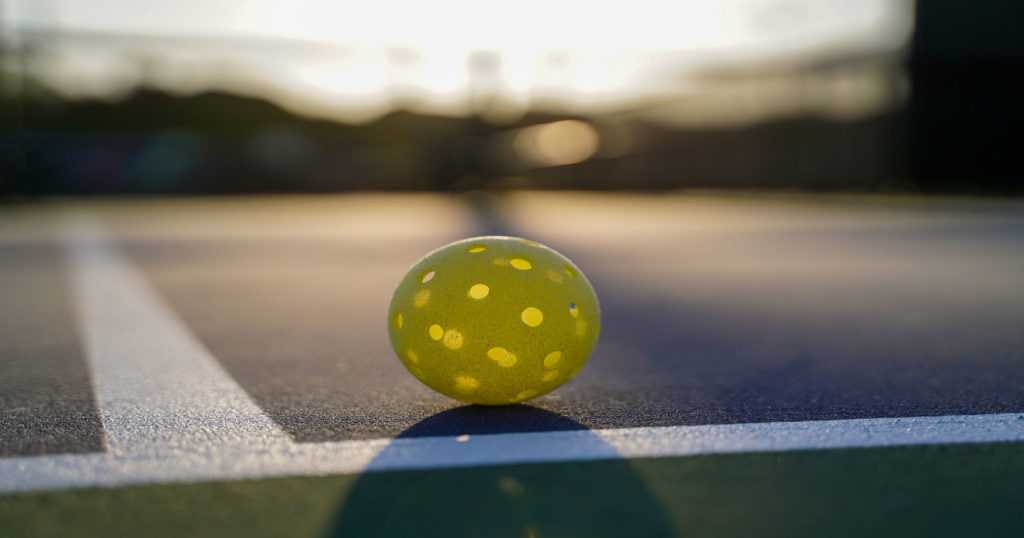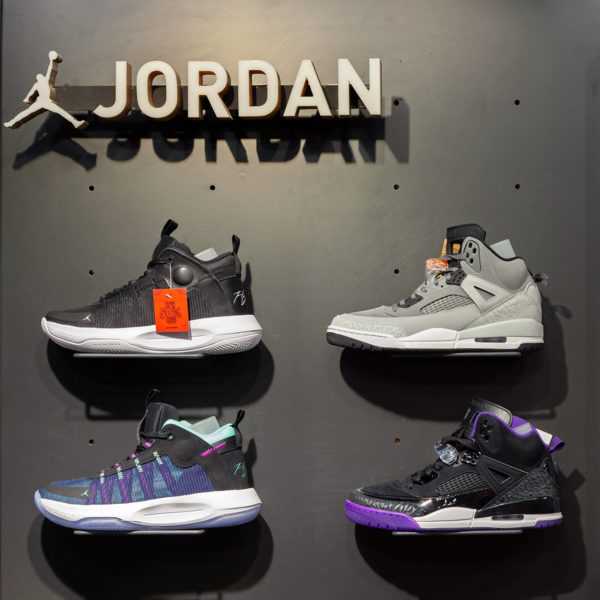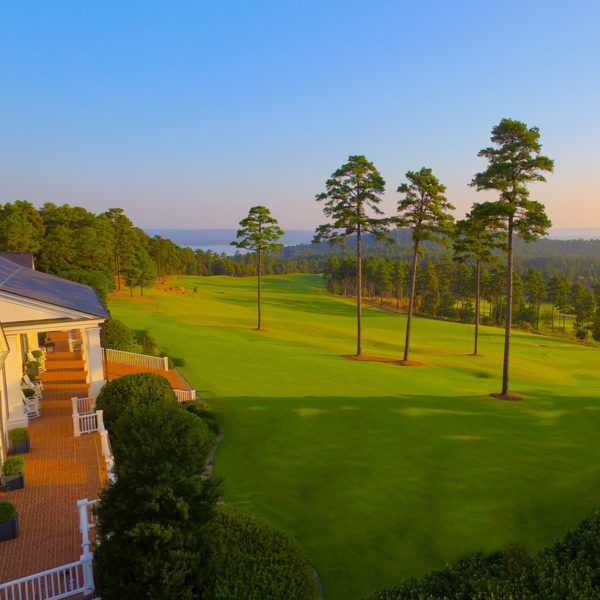Getting Hot in the Kitchen: Pickleball Comes of Age


Chuck Menke is one busy human these days. Since joining USA Pickleball as Chief Marketing Officer earlier in the year, he has zig-zagged across the country with a singular goal in mind: fostering more pickleball enthusiasm and awareness.


“I’m pretty sure I hold the record for longest time elapsed between playing pickleball [games,]” he says, mulling over the three decades that sandwich the first time he played the sport and today.
It all began in college. In 1992, Menke was a journalism student at the University of Missouri. One of his friends there, a star tennis player on campus, approached Menke to see if he might join as his doubles partner for a game of intramural pickleball. Menke had never even heard of the game. “The match was in less than an hour,” he says. “If he was asking me, he was pretty desperate.”
The match was pretty uneventful, and Menke went on to a career in the sports industry, working for organizations like USA Hockey and USA Triathlon. In fall of 2020, Menke hit the pause button on his work in the world of sports organizations and spent time caring for family members, volunteering, and consulting. A year and a half in, a call from Robert Quicksilver, president of USA Pickleball, piqued his attention.
Quicksilver thought Menke might be a great fit for a recent opening at the organization. During the interview process, which included a break to play pickleball with the organization’s board members, Menke realized it wasn’t just a great fit for his next job. Pickleball, he sensed, was an opportunity; it was ready to arrive to the masses on a larger scale.
Born of Necessity
Although many newer players and communities have just begun to appreciate the sport, pickleball is not new at all. In fact, in 2022, it celebrates its 57th year. Legend has it that in 1965, a trio of dads Joel Pritchard, Bill Bell, and Barney McCallum, returned from a game of golf to gaggles of bored children. The families spent their summers together on Bainbridge Island, located off the coast of Seattle, Washington and Pritchard’s home had a badminton court.
There wasn’t enough equipment for the children to play a regular badminton game, so the dads moved quickly and improvised. They used what they had on hand, including rackets and a wiffle ball. They also lowered the net, creating a fun, but random hybridization of tennis, badminton, and wiffle ball that was an instant hit.
The origins of the name are somewhat less clear. Some say it was named by Joel Pritchard’s wife Joan, who said it reminded her of pickle boats used in rowing, which are created with oarsmen who “were chosen from the leftovers of other boats,” according to USA Pickleball. Others tie it to the Pritchard’s Cocker Spaniel, Pickles, who was known to chase the ball and run off with it during their games.
For years after that first game, pickleball gained in popularity, transitioning from a yard sport for kids to one that is played seriously. But what hasn’t changed is that practically anybody can play, regardless of age or skill, it is easy to pick up and adapt to, and most of all, it is meant to be for fun.
Catching On Commercially
There are numerous signs that the recent rise in pickleball enthusiasm is just beginning. During the warmer days of the pandemic, there was a hunger for safe socialization, fitness, and gathering. Pickleball was still a highly niche sport then, often played by older adults and at local facilities like a YMCA, but it handily filled the need to gather safely outside, have fun, and shake off the dreaded “quarantine fifteen.”
On the accessibility front, pickleball is a racket sport that beats others, such as tennis. For starters, the playing field is smaller. Up to four pickleball courts can fit into a standard-sized tennis court. The smaller sized courts make it easier for players to volley the ball back and forth, and serving in pickleball is typically done underhand and at half the distance of a tennis court.
Closer proximity to opponents also creates a dynamic that isn’t typically found during battles on the tennis court – a sense of community. Ryan McSpadden, EVP of Strategic Partnerships at media and marketing firm Intersport, is like many pickleball converts who’d never heard of the sport but fell in love instantly. “There’s something here and that something is community and passion,” he says. “Players were completely engrossed with the sport. They couldn’t talk about it enough. They couldn’t play it enough. I knew there was something here.”
That “something” bears out when considering the latest numbers from a recent report by the Sports & Fitness Industry Association’s (SIFA) latest report. SFI is a trade association in the American sporting goods and fitness industry and found that in 2021, an estimated 4.8 million people picked up a racket and played pickleball. Within that total number, 3.5 million players identified as “casual,” meaning they played anywhere from one to seven times per year. The other 1.4 million identified as “core,” meaning they played eight or more games per year, but notably, while core players didn’t grow from 2020 to 2021, players that identified as casual did, by 22 percent.
Catching On Professionally
In addition to the enthusiasm on the commercial consumer front, pickleball has begun to generate buzz on the professional athlete circuit. In 2009, USA Pickleball held its first Nationals tournament, hosting more than 400 players. Compare that to the 2021 Margaritaville USA Pickleball National Championships, which drew more than 2,342 registered players who competed for $90,000 in prize money, and had some of its games broadcast, even at the national level on ESPN-U. USA Pickleball now tracks 125 nationwide tournaments.
Pickleball’s rise in popularity has also grabbed the attention of key manufacturers in the retail space. For instance, the company Franklin Sports, which has a storied history of being a provider of racket sports goods, got into pickleball in 2016 at the urging of a fan and family friend. In 2021, Franklin partnered with USA Pickleball to design more pickleball-friendly merchandise, which included the X-40, a first official game ball to be backed by USA Pickleball.
This past spring, the Billie Jean King National Tennis Center, located in Flushing Meadows, Queens, hosted Franklin’s New York City Open, an Association of Pickleball Professionals (APP) event. During the event, Intersport, APP, USA Pickleball, and Major League Pickleball released a joint announcement that they had entered into multi-year agreements with sneaker maker Skechers to make it the official footwear brand for pickleball at each organization.
According to McSpadden, the pickleball prototype shoes were produced at a run of 300 pairs and distributed during the US Open in Naples, Florida. “They set up an activation space on Monday and by Tuesday, they had sold all 300 pairs,” he says, adding that pickleball-friendly shoes are designed for quick start and stop ability and to grip different court surfaces.
Pickleball is also poised to be a growth winner. USA Pickleball estimates that from 2020 to 2021, the sport grew 14.1%, which followed 21.3% growth the previous year and equates to an average annual growth rate of 11.5% over the past five years. This growth is not only being fueled by the increase in popularity. It is also being fueled by major retailers getting into the space, offering paddle and ball sets for under $50.
Putting together a court can be as simple as setting up a net in a cul-de-sac, but hardtop professional courts start in the $25,000 range, and plenty of clubs are banking on the sport’s growing popularity. This past spring, Baharm Akradl, CEO of boutique gym and health club chain Life Time Fitness, reported to CNBC that since October 2021, they had added 84 permanent pickleball courts at 30 of their clubs, which netted 7,000 new players. Life Time plans to invest $50 million to $75 million to build out between 600 and 700 new courts at their facilities.
Akradl also plays the sport with gusto. “I love the sport because it’s the first sport I see bringing all of America together. It is accessible to everybody and easy to learn,” he says.
Possible Rivals?
USA Pickleball recently reported 38,410 total known courts and membership of 53,110, up 43% over 2021 membership numbers. But it’s one thing to head down to a local YMCA to play a round on a designated court and another thing entirely to co-opt a hard surface for a game. Some communities, such as San Diego, California, are grappling over which sport the hard-surface courts should accommodate. The city, which is rife with tennis courts but has no dedicated spaces for pickleball, made headlines with its antagonistic public hearings over the two sports.
Andy Subject, San Diego’s director of parks and recreation, told reporters that some members of each sport community viewed the other as enemies. The parks and recreation department is looking to bridge the divide and serve as a sort of de facto peacemaker. “We’re making an attempt to carve the center pathway to offer each [group] what they want,” he said.
But not everyone is willing to get lost in the debate about what to do with the hard-surface courts. Instead, folks like Menke and McSpadden view more racquets in more hands as an overall good thing and a net positive for racquet sports in general, even if pickleball is the more fun cousin in the family. “People don’t want to lose that natural social [aspect],” says Menke. “It’s very authentic and that’s something that people don’t want to lose as the sport continues to grow.

